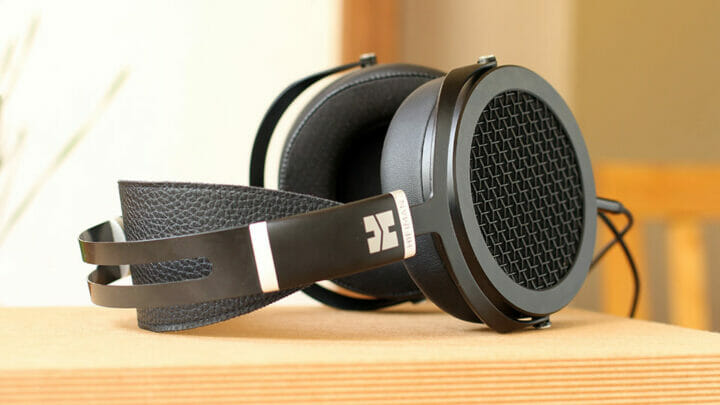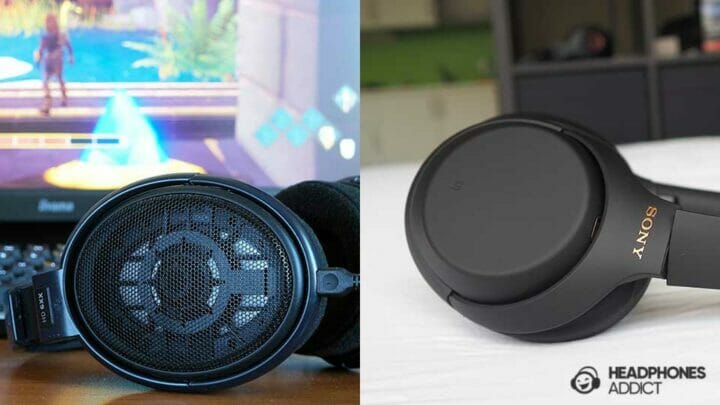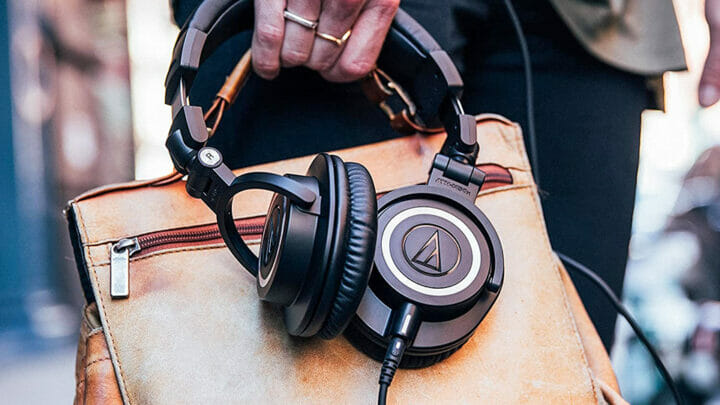Soundstage is the perceived space the sound is coming from.
Learn about types of soundstage, what headphones have good soundstage, and more below.
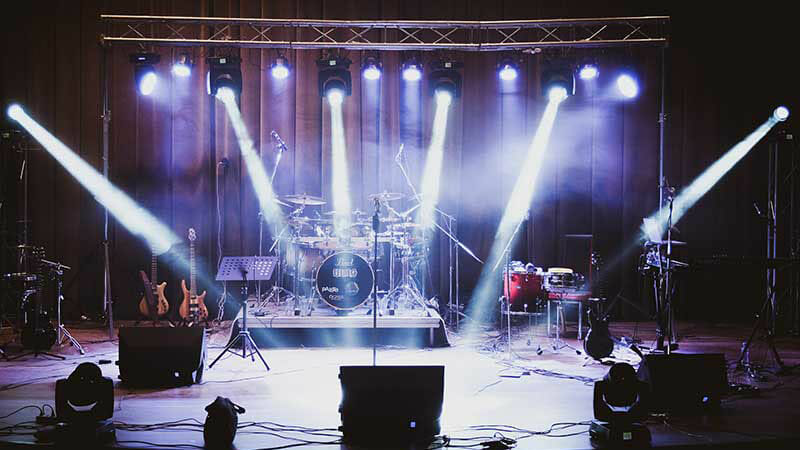
Definition: What is Soundstage?
Soundstage (passive soundstage) represents the sensed physical space in which sound is reproduced. It describes a three-dimensional space with width, depth and height that mimics the recording environment.
Good soundstage creates an illusion of a real-life stage experience as if you were listening to a live concert. You can determine the size, location and distance of the spatial sound and the surrounding environment. This allows the listener to experience the immersion of the recording space.
A good soundstage is big, wide with good depth. It allows you to forget you’re listening to a recording. For this reason, it’s a popular audio feature among audiophiles.
An example of a soundstage:
Imagine a live singer walking left and right on the stage. If you’re listening at the concert, the singer’s voice will change depending on the position.
If you close your eyes and listen to the singer’s voice, you can determine where on stage the singer is. The same is true for guitar players, drums and other instruments.
That is an example of a good soundstage. You are capable of pinpointing the direction of sounds when listening to headphones.
Factors affecting the soundstage
A couple different factors affect soundstage in general:
- Headphone design, type and the angle of drivers affect the soundstage. We discuss it below.
- Speaker position in a speaker audio system: Wider position of speakers creates a wide soundstage, and a narrow positioning the opposite.
- Room acoustics: acoustic properties of a room affect the soundstage. Sound reflecting off walls, ceiling and floor shape the audio spaciousness.
- Recording quality: A high-quality recording with a smart microphone position recreates a better soundstage that mimics the width and depth of the sound.
Why should I care about the soundstage?
A good soundstage enhances the music listening immersion, presence and enjoyment. It gives a feeling of being present in the actual environment where the music is played. That means experiencing the music as it was meant to be heard.
And a good soundstage in headphones is also important for a couple of things:
- Competitive & immersive gaming: To determine where your enemies are in competitive shooter video games and a more immersive experience for single-player games (See best gaming headphones).
- Neutral sound: To recreate the most natural-sounding audio, which is crucial for producing, mixing and for studio headphones in general.
- Maximum enjoyment: Soundstage is important for enjoying the most natural sound with headphones. Whether at home or somewhere else, an expansive soundstage always brings the best out of songs.
Difference between soundstage in headphones and speakers
Soundstage in headphones and speakers is often different due to physical differences in how sound is reproduced.

Headphones are limited to a smaller space around the listener’s head. Because all the sound is produced within headphones, they struggle to produce the same level of spaciousness as speakers.
Speakers have an advantage because they can be positioned further apart and disperse the sound waves into a wider physical space. This creates a more natural soundstage.
But many headphones can do the same. We talk more about the type of headphones with good soundstage below.
Types of Soundstage
These are the different types of soundstage and their differences:
Narrow soundstage
A narrow and tiny soundstage creates a sense of sound coming from the center of the audio field, between the right and left earcup in headphones. It’s common in earbuds that usually have a narrower soundstage. It doesn’t offer the highest level of immersion.
Wide soundstage
A wide soundstage creates a feeling of spaciousness in the audio field. Sounds appear from a broader and bigger space around the listener. It’s an immersive experience, like listening to live music on a stage in front of you. Listening to music with a wide soundstage enables separating instruments and other sound sources, hearing each in its own space.
A wide soundstage is preferred over a narrow one due to creating a more life-like listening experience.
Intimate soundstage
An intimate soundstage creates a feeling of closeness, with sound appearing very close to the listener’s ears. It gives a sense of listening to a music source very closely. As if you were standing right next to the band playing music.
Far away soundstage
On the contrary, the far-away soundstage creates a sense that the sound is coming from sources further away from the listener. It’s effective at creating an immersion with the music as if it’s coming beyond the physical space of speakers or headphones.
The above types of soundstage are not mutually exclusive. A good pair of headphones can reproduce different types. It also depends on the quality of the recording.
How to Evaluate Soundstage in Headphones?
The easiest way to evaluate soundstage in your headphones is by listening to them with quality recordings.
Here are a couple of YouTube videos that are a good start.
Put on your headphones and play them:
Below is a full test for headphones, including the soundstage test at the beginning.
Another one…
This is a virtual barber shop. If you have headphones with a good soundstage, it’s easy to pinpoint the location of the barber. With a smaller soundstage, all the sounds are less pronounced, and it seems they are coming from the same space.
Did you listen to the recording above with your headphones?
What did you find out? Share your findings in the comments at the bottom of the article.
P.S. If you have different headphones, listen to the same recording with each to spot the difference.
Factors Affecting Soundstage in Headphones
What affects soundstage in headphones?
Driver size
Driver size and, consequently, headphone type impact the soundstage. Bigger drivers are better at creating an expansive audio field.

For this reason, over-ear headphones with big drivers produce the best soundstage.
On-ear headphones and earbuds (in-ear headphones) produce smaller soundstages due to smaller drivers.
Driver angle
The angle of the driver changes where the sound is directed and thus impacts the soundstage. Many headphones have angled drivers to enhance soundstage production by mimicking the position of the ears.
Earpads shape and size
Earpads impact the soundstage as well as sound quality. The shape and size play a part, just like the driver size. Over-ear earpads are bigger and have more space for sound to bounce around and create a bigger audio field.
On the other hand, in-ear headphones are inserted into the ear canal, where there’s less space for creating a soundstage.
Earcup design (Back design)
The back design of headphones plays a big part. Open-back headphones have a much better soundstage due to more audio production space. Open-back earcups aren’t enclosed but breathe with the surrounding environment.
Closed-back headphones produce a more focused and intimate soundstage.
Quality of recording
The quality of a music recording and its format is also important. High-quality recordings provide more information for accurate spatial information, which leads to better soundstage. Binaural recordings, which reproduce music in a way humans naturally hear it, create a more natural soundstage.
In summary, the design and size of headphones play a big part in creating a soundstage.
What Types of Headphones Have a Good Soundstage?
Headphones with big drivers, open-back design and planar magnetic drivers produce the best soundstage.
Open-back headphones
Open-back headphones have open earcups. Their drivers aren’t enclosed, so the air and sound can travel through headphones beyond the inside of the cups.

And generally, open-back headphones have bigger ear cups allowing more space for the sound to bounce around. The sound waves travel more freely around your ears, so you perceive them more effectively. Resulting in a bigger, wider soundstage and a more natural listening experience.
Check the best open-back headphones here.
On the other side of the coin, closed-back headphones are better at passive noise isolation (blocking ambient noise and low sound leakage), but the soundstage suffers because of it. Closed cups don’t allow sound waves to travel freely, thus changing your perception.
Here we discuss more differences between closed-back and open-back headphones.
Over-ear headphones
Over-ear headphones have bigger earcups that fit larger transducers (drivers). Larger transducers have an advantage in recreating soundstage.
So, if you’re choosing between different types of headphones, get over-ears for a larger soundstage.
Planar magnetic headphones
Planar magnetic headphones use planar magnetic drivers instead of the typical dynamic drivers. This driver produces a more natural and detailed soundstage because it’s better at reproducing subtle nuances and details which are important for the experience.
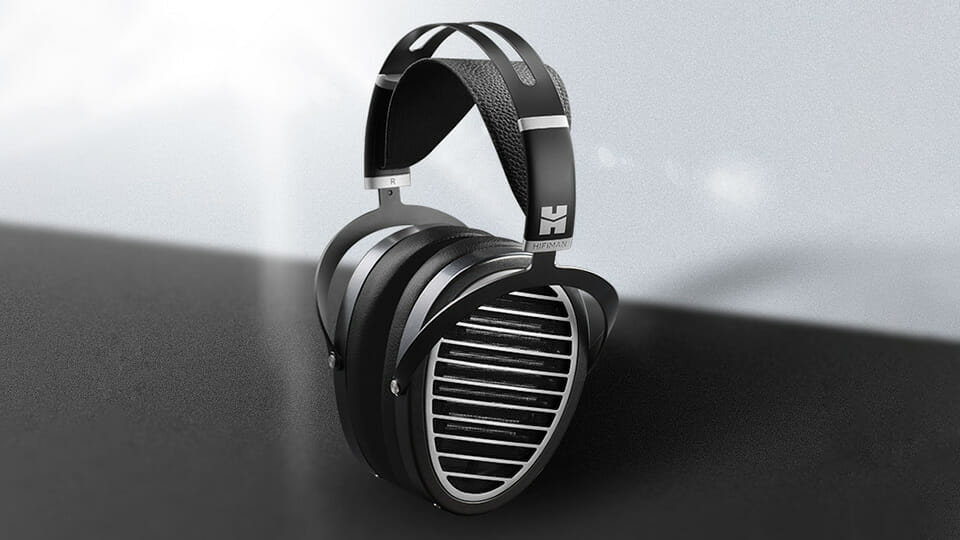
Ultimately, the best headphones for the soundstage depend on personal preferences and needs. But in general, the 3 categories of headphones above are better at creating big soundstage than other types.
And for the best soundstage, get big over-ear, open-back headphones with planar magnetic transducers. Find the top choices among audiophile headphones.
Imaging vs. Soundstage
Summary: Imaging is the ability to produce accurate and clear directions of sounds inside the stereo field. Soundstage describes the stereo field’s size (width, depth, height) and its sense of spaciousness.
Audio imaging and soundstage are similar but not the same concepts. Both describe spatial dimensions of sound with a small difference.
Imaging (stereo imaging, sound localization) defines the accuracy and clarity of each sound and instrument inside the audio field (also known as a soundstage).
Good audio imaging means each instrument and vocal comes from a specific direction inside the audio field. You get a clear sense of instrument separation and the direction the sound is coming from. And it’s straightforward to locate each sound inside the mix. Consequently, it creates a feeling of space and depth.
On the other hand, the soundstage is a bit different.
Soundstage describes the overall depth and spaciousness of the audio. It doesn’t specifically focus on instrument separation inside the mix but on the overall position of the mix in space.
A good soundstage gives the sense of sound coming from a physical space where you can locate its width, depth, and height.
Imagine you’re sitting in the front row at a concert. The music is coming from all directions, with an emphasis in front of you. This impression mimics concert halls and other audio spaces.
So, imaging can help create a good soundstage. But not always. You can have good imaging and instrument separation in headphones, but if they fail to recreate a wide, deep sense of sound, then they’ll have a small soundstage.
Likewise, you can have a wide soundstage but bad imaging where you can’t pinpoint the location of instruments.
The difference between Apple spatial audio vs. soundstage
Apple spatial audio is a virtual surround sound that creates a virtual soundstage with processing. It changes the sound by determining the position of your head relative to the sound source (your phone on which you watch a video).
Regular soundstage doesn’t require processing, and it’s also called passive soundstage. It’s the headphones’ ability to recreate spaciousness in sound without the help of software.
The difference is similar to the difference between active noise cancellation and passive noise isolation. The first one requires processing power and technology to cancel noise. The second one is passive and is determined by design and materials.
FAQs
What is meant by soundstage?
Soundstage describes the space where the sound is coming from. A soundstage can be small and narrow, with all sounds coming from the same direction. Or it can be wide and expansive, where the listener can easily separate instrument positions on the virtual stage.
What is soundstage quality?
A quality soundstage is wide and deep, where it’s easy to pinpoint the location of each instrument in the music. It creates a feeling of being in front of a live concert stage where you can hear the different directions sounds are coming from.
What is soundstage used for?
Soundstage is used to describe the spatial experience of sound in music inside an audio field. It enhances the enjoyment of music with headphones and speakers by recreating a realistic listening experience and the feeling of being present at a live concert or recording studio.
Read more:
Conclusion
The soundstage is an essential part of listening to music with headphones. If it’s good, it creates the feeling that the listener is right in the midst of it. But when narrow and small, the soundstage makes the music feel flat and unengaging.
To recap the factors discussed above, select over-ear, open-back headphones with planar magnetic drivers for a good soundstage. The size, angle of drivers, and recording quality play a part in creating an enjoyable spatial audio experience.

Matija Ferjan is a seasoned audio enthusiast reviewing headphones since 2015. He has personally tested hundreds of headphones and earbuds. He’s an active member of the Headphone Audio community and a true nitpicker, always looking for the “best-value-for-money” headphones.



